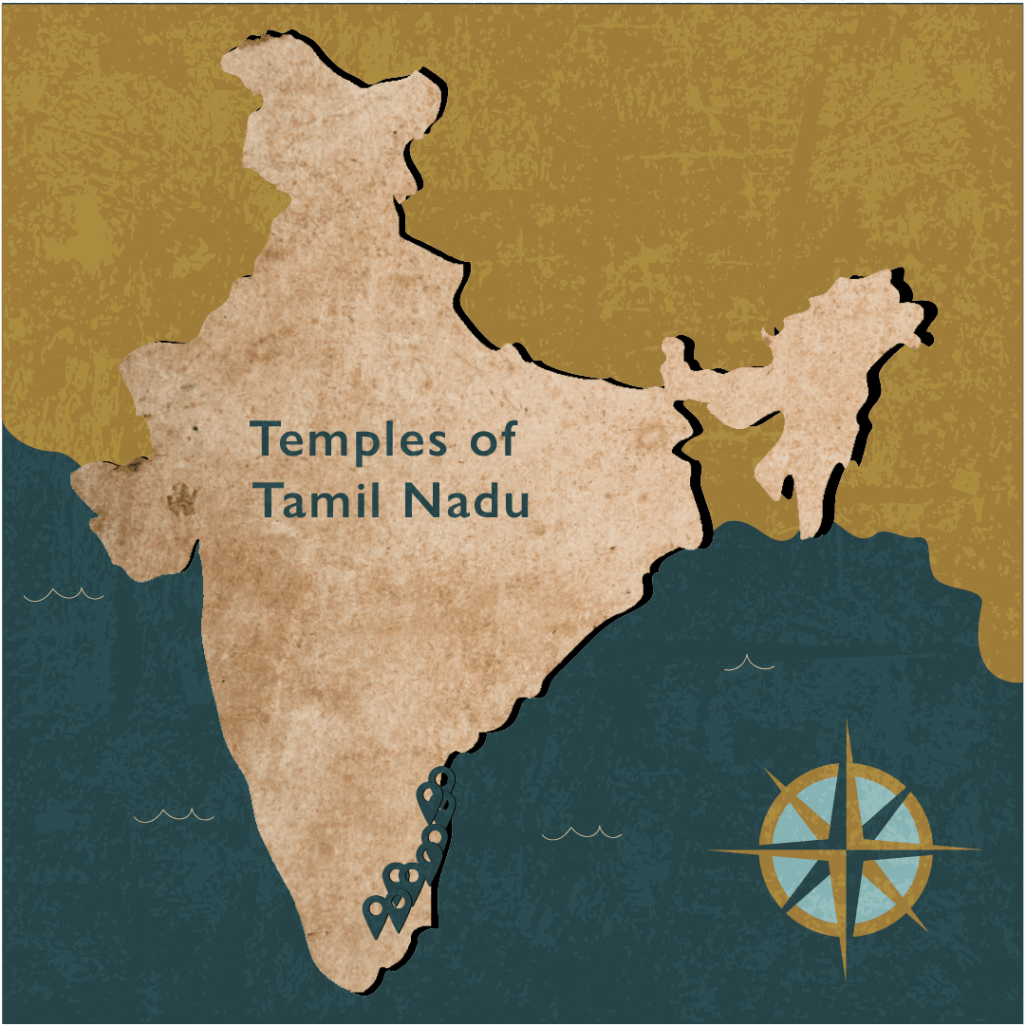
12 NIGHTS & 13 DAYS


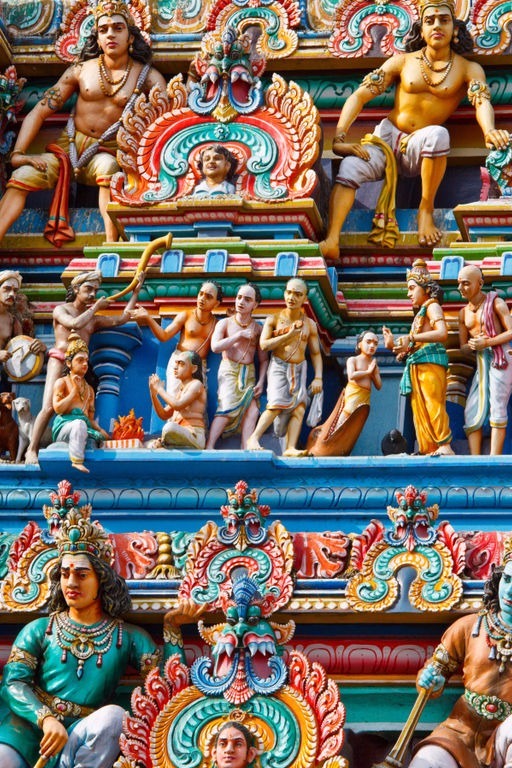
Arrive Chennai by an international flight. After clearing immigration and customs formalities you are met by a representative from First Tours India and transferred to Taj Fisherman’s Cove Resort & Spa, a snug resort built on the ramparts of an Old Dutch fort. Set amidst 22 acres of whispering casuarinas and palm trees, the resort is located on Covelong beach offering a view of the enthralling Bay of Bengal. Chennai, formerly known as Madras, is the state capital of Tamil Nadu and the gateway to the rich and varied culture of the South India peninsula. Originally a cluster of fishing hamlets along the Coromandel Coast, the city developed its cohesive shape under the British. Today, it is South India's commercial and cultural capital, and the fourth largest metropolis in India.
Taj Fisherman’s Cove Resort & Spa

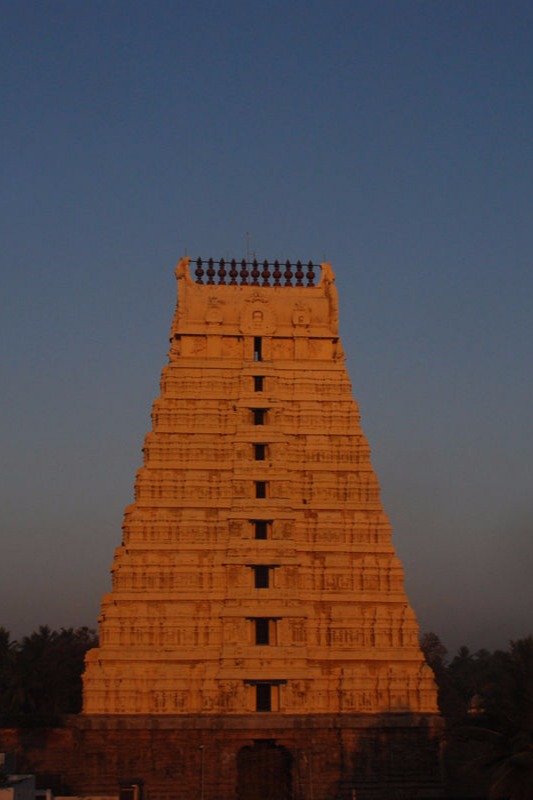
In the morning visit Fort St George, the first bastion of Britain in India. Today the fort houses the secretariat and the Legislative Assembly of Tamil Nadu Government. One of the most interesting buildings in the compound is St Mary’s Church, the oldest Anglican church in Asia built between 1678 and 1680. Within walking distance of the fort is George Town, the longstanding commercial centre of the city. The important buildings in George Town are the 125 ft high Lighthouse; the grand Indo-Saracenic High Court complex; General Post Office with its archways and square towers and Parry’s Corner, the oldest British mercantile company still operational in Chennai. Drive through the Marina connecting Fort St George with San Thome Basilica almost 3 miles away. The drive along the Marina passes through many spectacular colonial and Indo-Saracenic buildings including the 1857 Madras University, Presidency College and Parthasarathi temple complex. Dedicated to Lord Krishna as the royal charioteer, Parthasarathi temple complex shows five of Vishnu’s 10 incarnations. Enjoy a traditional south Indian lunch at Anna Laxmi. In the afternoon visit the Government Museum that houses the world’s most complete and impressive selection of Chola bronzes and stone sculptures from South India and the Deccan. End the day with a visit to Mylapore and San Thome. The site of a great Pallava port in the 7th and 8th centuries, Mylapore is today one of the busiest parts of the city that houses many religious organization, lively bazaars and the Kapaleswar temple. The temple is a 16th century Siva temple with 131 feet Gopuram or gateway, built after the original was destroyed by the Portuguese in 1566. Mylapore’s link with Christianity date to 1st century CE, to the time of St Thomas. The Portuguese following the trail of the saint established the settlement of San Thome in the early 16th century. The present Basilica of San Thome over the tomb of the saint is an impressive Gothic style structure built in 1898.

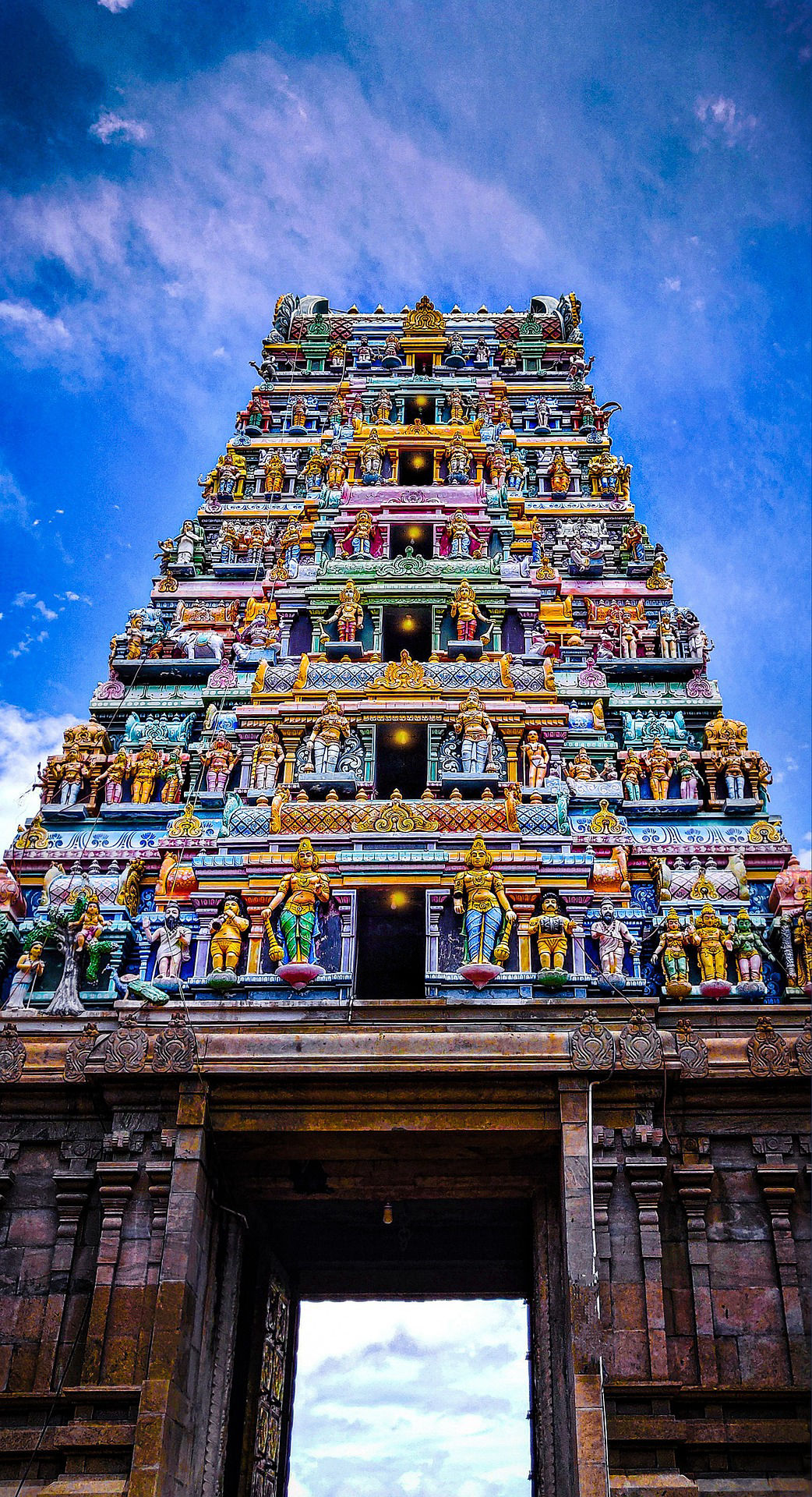
Drive 45 miles to Kanchipuram known for its temples and hand-woven silk saris. An erstwhile capital of the Pallavas and Cholas dynasty, the town is dotted with the soaring spires of a thousand temples. Visit the Ekambareswara temple with its thousand pillared hall, Sri Kamakshi Amman temple and the 8th century Kailasanatha temple, a perfect example of early Dravidian architecture. Kanchipuram is also known as the "Silk City" of India as more than 5000 families living in and around the city are engaged in the weaving of silk saris and silk fabrics. Visit a co-operative society set-up by local weaver's community. Proceed to Mahabalipuram, a UN World Heritage Site, and explore the Pallava period cave temples, monolith temple chariots and relief sculptured rock panels. Set in a boulder-strewn landscape on the Bay of Bengal this 7th century city is called to be a sculptor's delight which boasts some of India's most sublime rock-cut art. The spectacular Shore temple perched dramatically on a promontory by the sea has a low boundary wall with rows of seated Nandis surrounding it. Placed inside are a reclining Vishnu, a 16-faceted polished linga and reliefs of a composite form of Shiva with his consort Parvati and sons Skanda and Ganesh. Return to your resort in the evening.

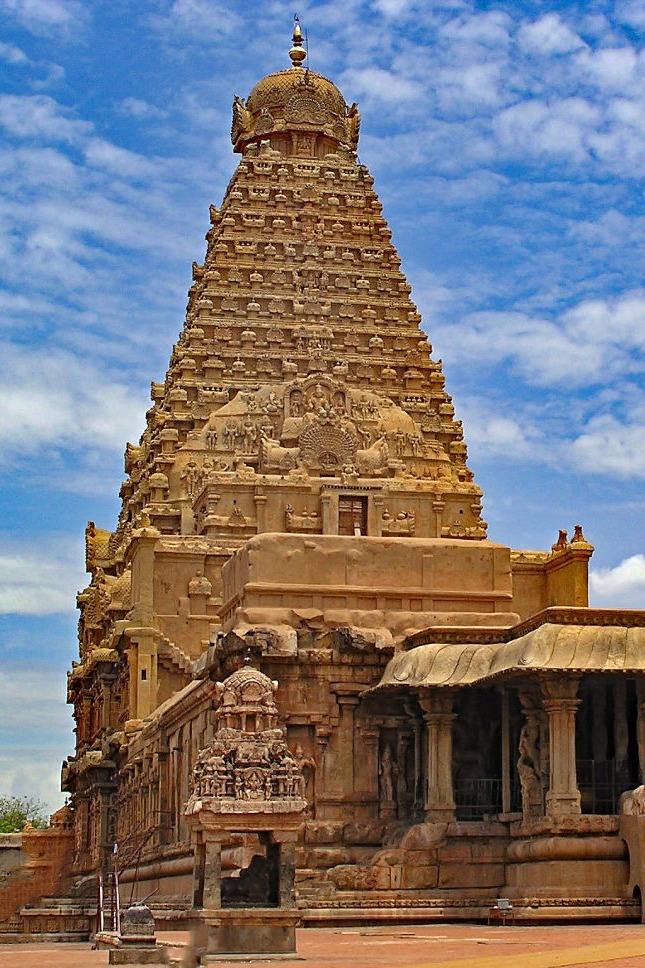
Today fly to Madurai. Arrive Madurai and transfer to The Gateway Hotel Pasumalai. Perched atop the Pasumalai hill with a panoramic view of the Temple city and the Kodai hills, this century-old celebrated property sprawls over 62 acres of landscaped gardens and is an epitome of colonial architecture. One of South India's great temple towns, Madurai is synonymous with the celebrated Meenakshi temple. This ancient city has been a rich repository of Tamil culture over the centuries. Some 2000 years ago it hosted the famous Sangams or gatherings of writers and poets which were to provide Tamil literature with some of its most enduring works. From the 7th to 13th centuries, as the capital of Pandyas, it saw art and trade with Rome and China flourish. Later it was captured by the Hindu Vijayanagar Kings and was the Nayaka capital in the 16th and 17th centuries. In the evening visit the Meenakshi Sundareshvara temple complex to witness the Aarti ceremony, the festival of lights, and the colorful procession in which Lord Sundareshvara is carried to Goddess Meenakshi to sleep by her side.
The Gateway Hotel Pasumalai

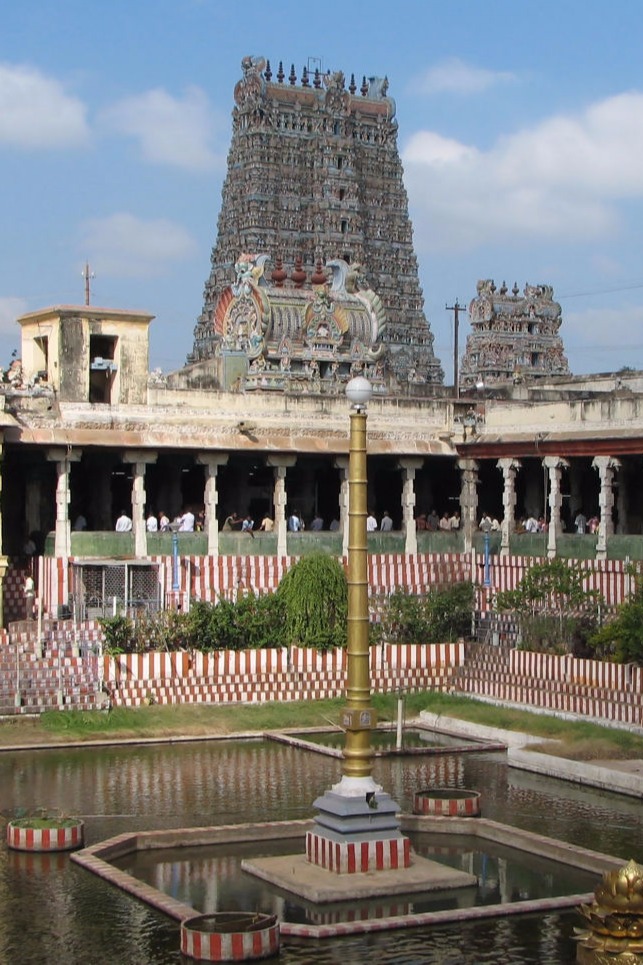
Today re-visit Meenakshi Sundareshvara temple complex, one of the largest temple complexes in India built between the 16th and 18th centuries. The temple complex is within a high-walled enclosure, at the core of which are the two sanctums, surrounded by a number of smaller shrines and grand pillared halls. Especially impressive are the twelve gopuras. Their soaring towers rise from solid granite bases, and are covered with stucco figures of deities, mythical animals and monsters, painted in vivid colors. Apart from the estimated 33 million sculptures, life of the temple is absolutely absorbing with the endless rounds of ceremonies, prostrations of countless devotees and glittering market stalls. Also visit the Art Museum that exhibits temple art and architecture, fine brass and stone images, friezes and photos. In the afternoon visit the Indo-Saracenic style Thirumalai Nayaka Palace which was built by the Nayaka rulers of Madurai in 1636. The building with its interesting Islamic influences was restored in the 19th century by Lord Napier and today only the spacious courtyard and a few adjoining buildings survive, their awesome scale evoking the grandeur of a vanished era. Proceed to visit Vandiyur Mariamman Theppakulam, the venue of the annual Theppam or float festival celebrating the marriage of Shiva and Meenakshi. The great tank has steps flanked by animal and bird shaped balustrades leading down to the rippling waters.

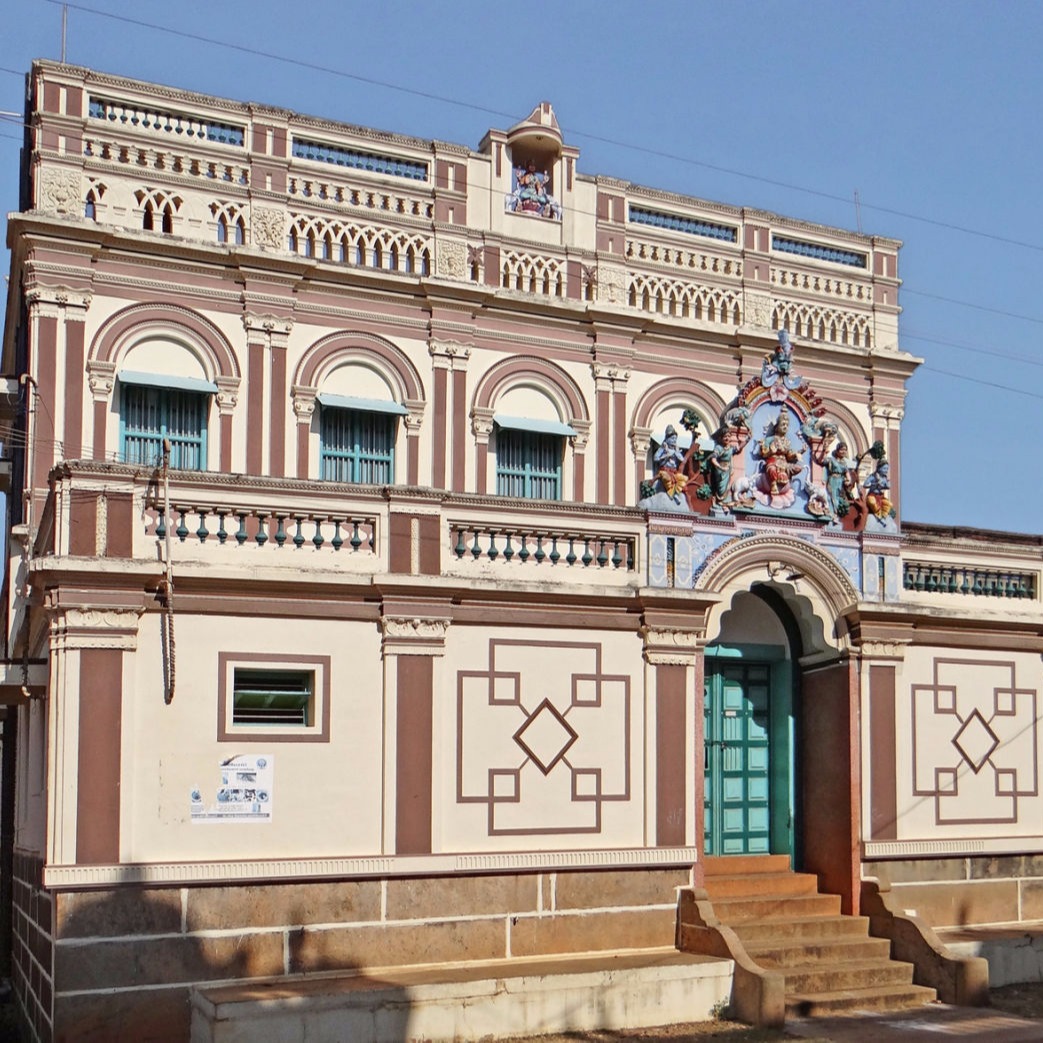
Drive 2 hours through scenic countryside to Karaikudi in the heart of Chettinad land. The arid region encompassing the towns of Karaikudi, Devakottai and their neighboring villages collectively known as Chettinad, are the homeland of the Nattukottai Chettiars. The Chettiars were astute businessmen who ventured overseas to do business in Southeast Asia in the 19th and early 20th centuries. On arrival check-in to The Bangala, a quaint heritage hotel located on the outskirts of Karaikudi. This afternoon visit the Chettinad houses which reflect the social, ritual and kinship needs of the community, as well as its economic status. These houses are built on a rectangular traversal plot that stretches across two streets with the front door opening into the first street and the back into the second. One of the specialties of these houses is the quality of their woodcarvings on the doors. Also visit Chettinad Museum which houses traditional jewelry and clothing, huge copper water vats and grain bins and everyday items that reflect the Chettiar's way of life.
The Bangala

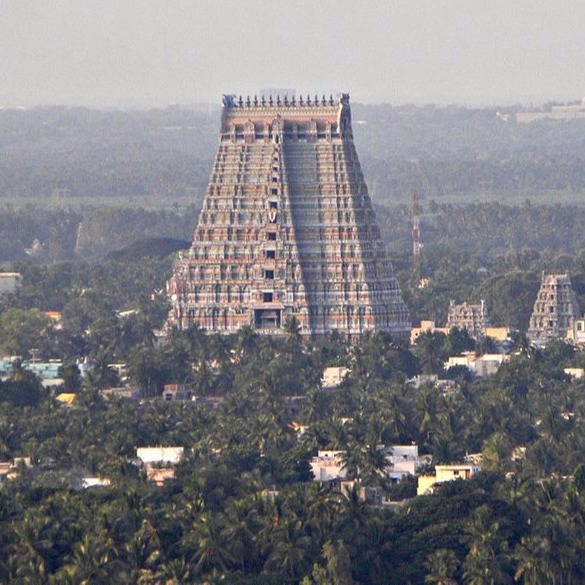
Early morning drive 65 miles to Tiruchirappalli, more commonly known as Trichy. Located at the head of the fertile Kaveri delta, this 4th largest city of Tamil Nadu is named after the fierce three-headed demon Trisira, who attained salvation after being slain by Lord Shiva. A Chola fortification from the second century, Trichy came to prominence under the Nayakas from Madurai who built the fort and the town capitalizing on its strategic position. Arrive Trichy and check-in to Hotel Sangam Trichy. In the afternoon visit the massive Rock Fort of Trichy. Perched dramatically on a rocky outcrop that rises 272 ft above the flat plains, this fortress was constructed by the Nayaka rulers of Madurai. Geographically the rock is said to be one of the oldest in the world dating over 3 billion years ago.
Hotel Sangam Trichy

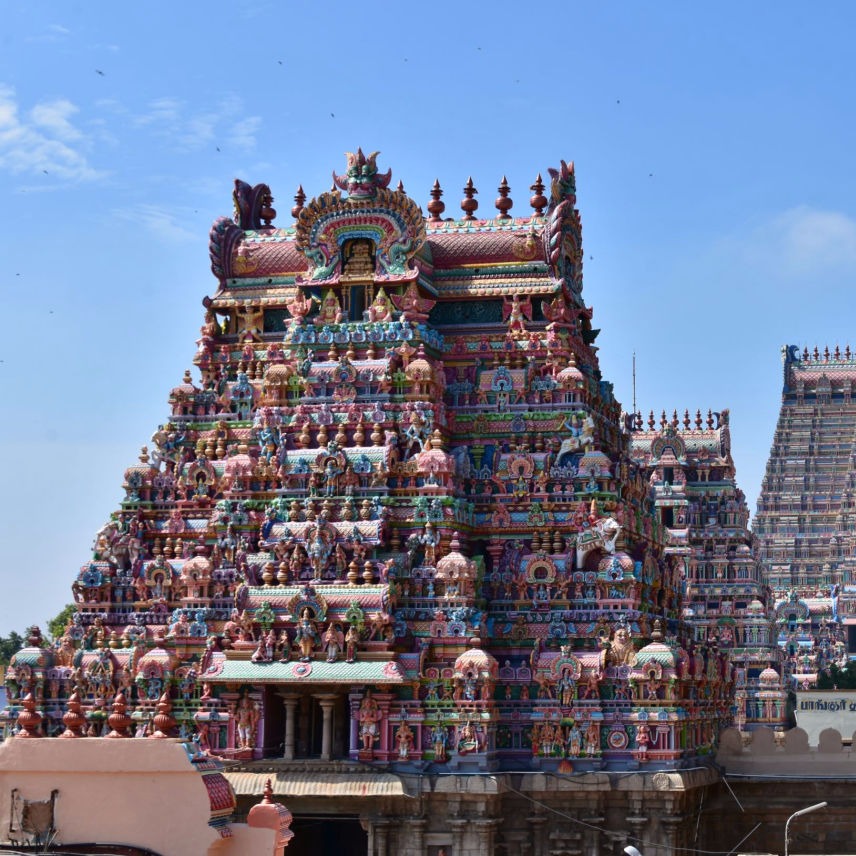
Drive north of Trichy to visit Srirangam, the temple town on the banks of river Kaveri. On the way to Srirangam, is an interesting river ghat where pilgrims take their ritual bath before entering the temple. The Ranganathaswamy temple dedicated to Lord Vishnu is surrounded by seven concentric walled courtyards with magnificent gateways and several shrines. It is noted for its beautiful sculptures, the 21 impressive Gopuram towers and its rich collection of temple jewelry. The temple occupies 156 acres making it the largest functioning Hindu temple in the world. The thousand pillared hall stands beyond the fourth wall and in the fifth enclosure there is the unusual shrine to Tulukka Nachiyar, the God's Muslim consort. The countryside to the west of the temple is an excellent place to sample rural Indian life. After visiting the temple complex return to the hotel in the late afternoon. Rest of the day is available to explore the bustling markets of Trichy.

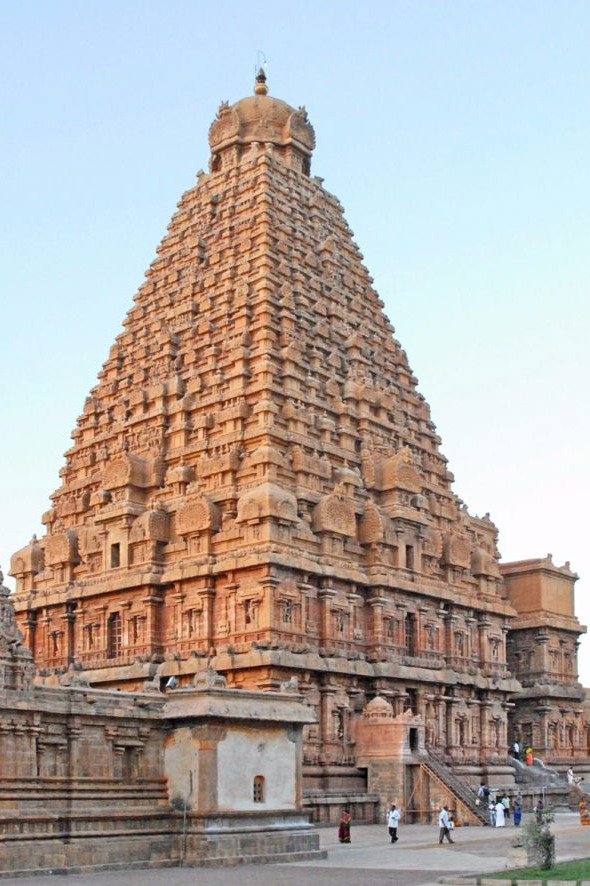
Today drive 30 miles to through scenic Tamil Nadu countryside to Thanjavur, the capital of the great Chola Empire where literature, painting, sculpture, Carnatic classical music and Bharatanatyam dance all thrived. The name Thanjavur derives from Tanjan, a legendry demon in Hindu mythology. It is one of the oldest cities in India and has a long history dating back to the Sangam period. The city rose into prominence during the rule of the Chola dynasty when it served as the capital of Chola Empire. After the fall of the Cholas the city was ruled by the Pandyas, Vijayanagar Empire, Nayakas and the British. The town is an important agricultural centre and known as 'the rice bowl of Tamil Nadu'. On arrival check-in to The Svatma. In the afternoon enjoy an excursion to Thiruvaiyaru known for the famous Panchanatheswara Shiva temple. This vast temple is known as "Dakshina Kailasam" or the south abode of Lord Shiva. Several inscriptions in the temple affiliate the temple to the Cholas, Pandyas and other rulers of South India. Thiruvaiyaru is more renowned for its association with Saint Thyagaraja who along with Muthuswami Dikshitar and Shyam Sastri comprises the Trinity of Carnatic Music.
The Svatma

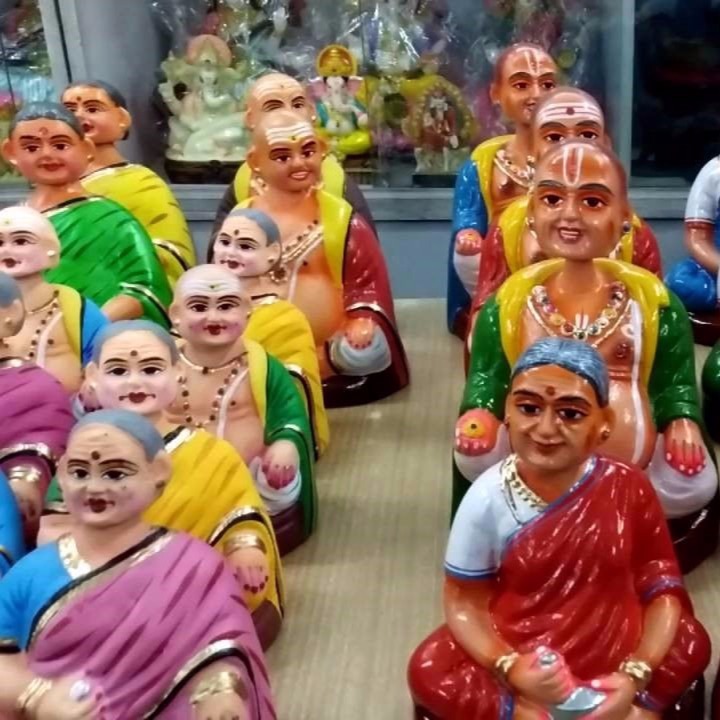
This morning visit the Brihadishwara temple that reflects the architectural prowess of Chola builders. This magnificent main temple has 62 meters high Vimana topped by a dome carved from an 80-ton block of granite, which needed 6.5 km-ramp to raise it to the top. The temple built mainly with large granite blocks has superb inscriptions and sculptures of Shiva, Vishnu and Durga on three sides of the massive plinth. The carving of dancers showing the 81 different Bharat Natyam poses are the first to record classical dance for in this manner. Since music and dance were a vital part of temple life and dancing in the temple would accompany the chanting of the holy scriptures which the community attended, Rajaraja also built two housing colonies nearby to accommodate 400 devadasis (temple dances). In the afternoon visit Raja Raja Museum in Thanjavur Palace that houses the largest collection of Chola sculptures in bronze and granite dating from the 7th to the 20th centuries.

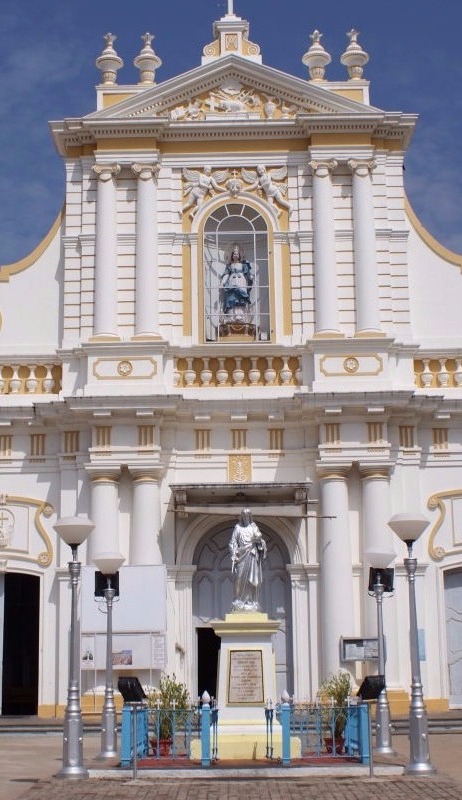
Today enjoy a spectacular journey to Puducherry. En route visit the temples of Kumbakonam, Gangaikondacholapuram and Chidambaram. The pleasant town Kumbakonam was named after the legend where Lord Shiva was said to have broken a Kumbha (water pot) after it was brought here by a great flood. The water from the pot is believed to have filled the Mahamakam Tank. There are many Hindu temples located in and around the city. Visit the famous Sarangapani temple and proceed to Gangaikondacholapuram. Gangaikondacholapuram which means “the city of the Chola who conquered the Ganga” was the 11th century capital of Chola king Rajendra. Explore the temple built by Rajendra to rival the Brihadisvara temple of Thanjavur. After sightseeing proceed to Chidambaram. The holy city of Chidambaram is famous for Sabhanayaka Nataraja temple. The temple complex has 9 gateways and four of them have towering pagodas or Gopuram each with 7 levels in the East, South, West and North. The Eastern Gopuram has all the 108 postures of the Indian dance form Bharathanatyam sculpted on it. The inner enclosure of the temple complex contains five important Sabhas or halls. The Chita Sabha, which houses Lord Nataraja and his consort; the Kanaka Sabha, from where all daily rituals are conducted; the Nritya Sabha, the hall of dancing; Raja Sabha or the 1000 pillared hall; and the Deva Sabha, where temple managers hold their meetings. The temple complex also has many smaller shrines and water bodies. After visiting the temple complex continue drive to Puducherry. Arrive Puducherry and check-in to La Villa located in the heart of the old quarter of Puducherry called ‘the white town’.
La Villa

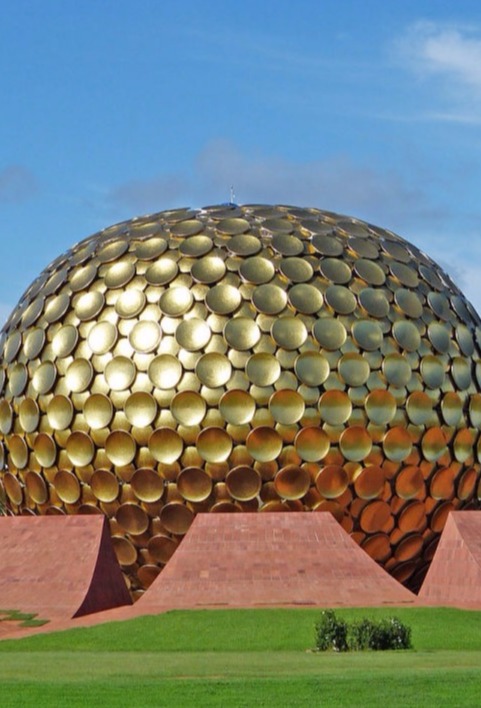
Puducherry, a former capital of French territories in India, was established in 1674 by the French East India Company. This historic town with distinct Gallic flavour is well known for the Ashram of the revolutionary philosopher Sri Aurobindo. The town is laid out in grid pattern with its elegant mansions, tree-lined boulevards, parks, bars and cafes. This town has been identified as the ancient Vedapuri where the sage Agastya Muni had his hermitage in 1500 BC. The French acquired land at Pondicherry in 1673 and renamed it as Puducherry. Later it was occupied by the British in 1761 and was voluntarily handed over to the Indian Government in 1954. Today explore the sites in Puducherry. The town of Puducherry is divided into two sections – the French quarter or ‘White Town’ and the Indian quarter or ‘Black Town’. In the French quarter, the buildings are typically colonial style with long compounds and stately walls. The Indian quarter consists of houses lined with verandas and with large doors and grilles. Drive through the heritage boulevards of Puducherry visiting the Mankula Vinayaka temple; Pondicherry Museum that has good collection of charming colonial furniture; Gandhi statue, the statue of Mahatma Gandhi surrounded by eight carved pillars; Notre Dames des Angels, the Church built in the Greco-Roman style in 1855 and the local market called Grand Bazaar. In the afternoon visit Aurobindo Ashram and Auroville, the planned City of Dawn. Founded in 1968 Auroville was inspired by the Mother, the spiritual successor of Sri Aurobindo. The main temple called Matrimandir at the centre of Aurorille, is a 30-meter-high globe shaped meditation room with a lotus bud shaped foundation urn and a centrepiece crystal is said to be the largest in the world. Auroville was envisioned as a Universal Town, where people from different nationalities, faiths and beliefs can live in peace and harmony. It is an attempt to realize a new society as envisioned by Sri Aurobindo and the Mother. People from more than 35 countries are living here to realize on human unity and transformation of consciousness. Auroville welcomes people from all parts of the world to live together and explore cultural, educational, scientific, spiritual and other pursuits in accordance with the Auroville Charter.

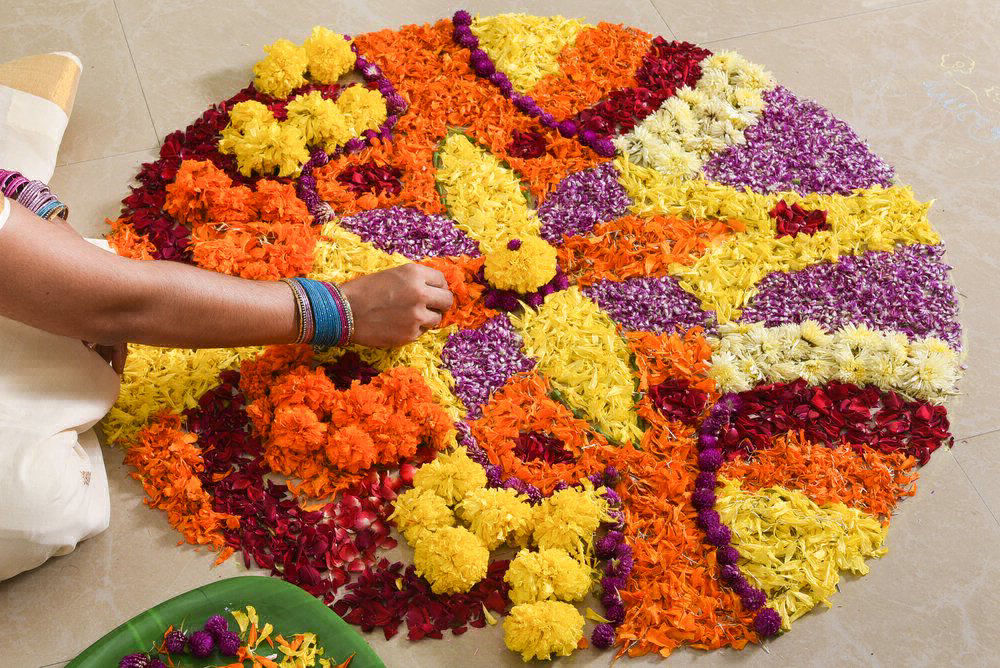
Depart Puducherry and drive 100 miles to Chennai. En route, stop at Gingee to visit the remarkable 15th century Gingee Fort. Originally the site of a small fort built by the Chola dynasty in 9th century AD, it was later modified by the Vijayanagar kings in the 13th century to elevate it to the status of an unreachable citadel to protect the small town of Gingee. The fort was further strengthened by the Marathas under the leadership of Shivaji in 1677 AD who recaptured it from the Bijapur sultans. It was later passed on to the French and finally the British took control of the fort in 1761. Arrive Chennai and board your homebound flight with colorful memories that will add untold pleasure to last for a lifetime.
